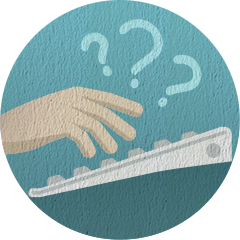Differences in Monocots & Dicots
-
-
Answer:
Monocotyledonae and dicotyledonae are two different types of flowering plants, called monocots and dicots for short. Several key differences exist between the two. Some of the differences require dissection or the aid of microscopic equipment to detect while other distinctions are apparent just by looking at them. Embryo The embryo of a monocot contains a single cotyledon, which is the part of the seed that becomes the first set of leaves for the plant. The cotyledon inside a monocot is a thin seed-leaf. Dicots have two cotyledons that are rounded and flat in shape. The cotyledon in a monocot is used for energy during the growth of the embryo. Dicots use their cotyledons for early energy, but they aren't used up until the first leaves capable of photosynthesis grow. Venation Venation refers to the pattern of veins in the leaves. Veins are made of vascular tissue, and the plant uses them to transport nutrients and water. The major veins in monocots are parallel to one another, with much smaller veins connecting them; this is called "parallel venation." The veins in a dicot branch out from a central vein; this is called "netted" or "reticulated" venation. Flower Parts If you count the number of floral parts, such as the petals, monocots usually have parts arranged in numbers divisible by three. Dicots usually have numbers of parts divisible by four or five. Not all monocots and dicots produce obvious flowers, and some produce flowers rarely, so it is not always easy to observe this distinction. Pollen Pollen contains the reproductive cells for flowering plants. Different types of pollen are classified by the number of elongated furrows on individual pollen grains. Pollen grains from monocots have a single furrow, extending from the outer layer. Pollen from dicots have three furrows. Studying individual pollen grains requires the aid of a microscope. Internal Stem Structure Both monocots and dicots are vascular plants, which means they use vascular tissue to transport water and minerals. In addition to the differences in the internal leaf structure, the vascular system of monocots and dicots is arranged differently. Vascular bundles in monocots are scattered throughout the stem, while the bundles in dicots form along the perimeter of the stem.
Bryant Harland at eHow old Visit the source
Related Q & A:
- What are the differences of Near in the manga version?Best solution by Anime & Manga
- How can you map the differences between Javascript objects?Best solution by Code Review
- What are the main differences between a Mobile and a PDA?Best solution by Yahoo! Answers
- What are the differences and similarities between European and Japanese feudalism?Best solution by Yahoo! Answers
- What are the differences between upscale bars and common bars?Best solution by Answerbag.com
Just Added Q & A:
- How many active mobile subscribers are there in China?Best solution by Quora
- How to find the right vacation?Best solution by bookit.com
- How To Make Your Own Primer?Best solution by thekrazycouponlady.com
- How do you get the domain & range?Best solution by ChaCha
- How do you open pop up blockers?Best solution by Yahoo! Answers
For every problem there is a solution! Proved by Solucija.
-
Got an issue and looking for advice?

-
Ask Solucija to search every corner of the Web for help.

-
Get workable solutions and helpful tips in a moment.

Just ask Solucija about an issue you face and immediately get a list of ready solutions, answers and tips from other Internet users. We always provide the most suitable and complete answer to your question at the top, along with a few good alternatives below.